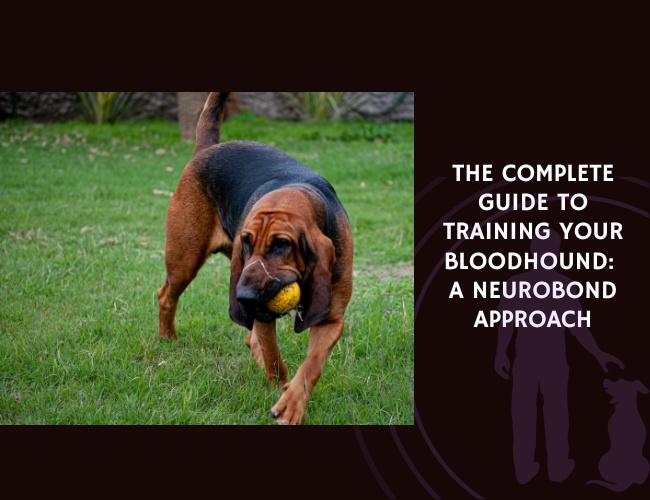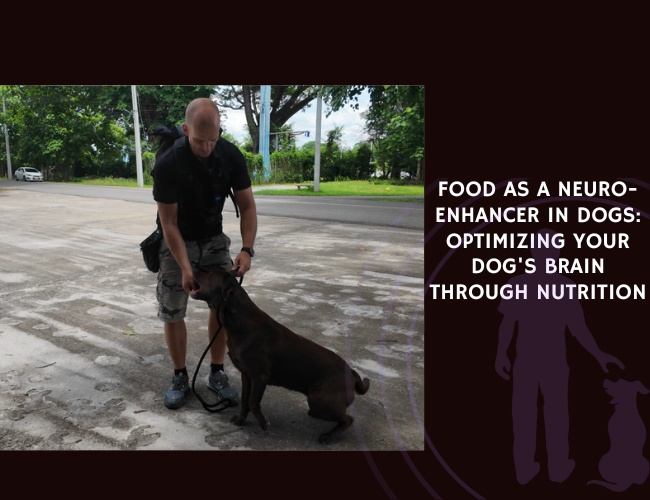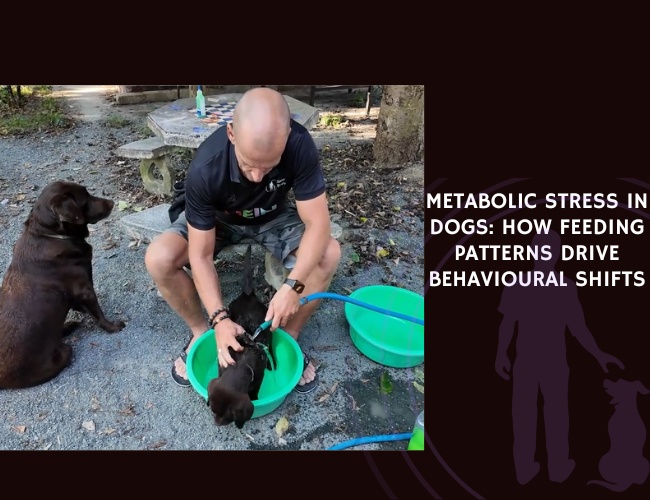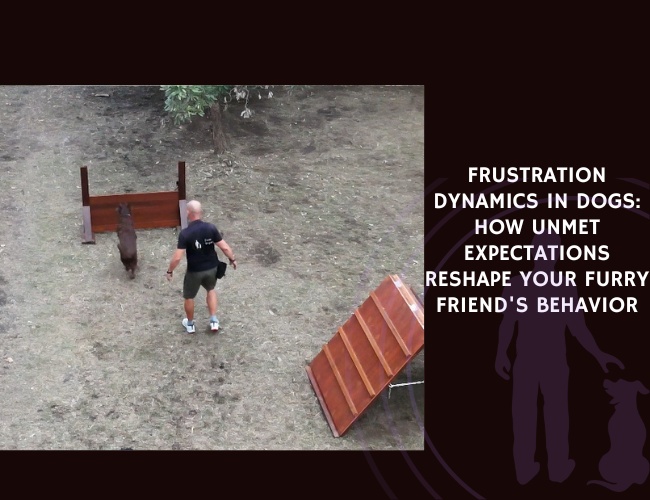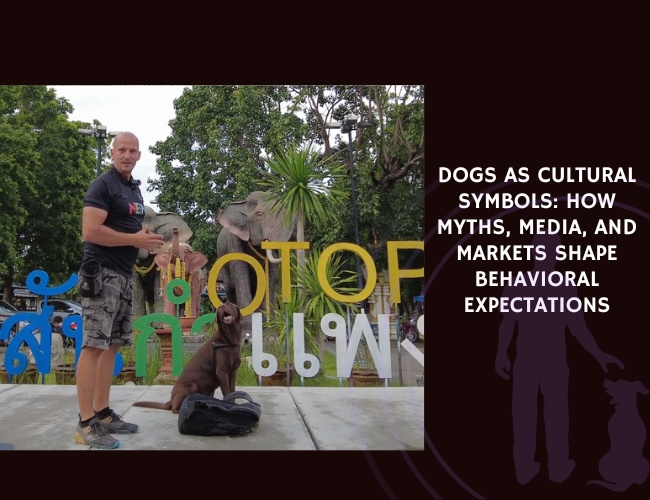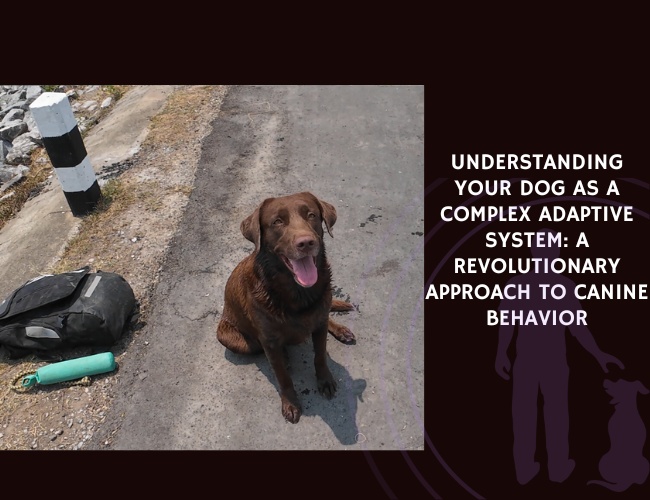Introduction
Your Bloodhound’s extraordinary nose contains over 300 million scent receptors—40 times more than yours—making them nature’s most sophisticated tracking system. This remarkable ability, combined with their gentle, independent spirit, creates both the wonder and the challenge of living with these magnificent hounds.
If you’ve ever watched your Bloodhound become completely absorbed by an invisible scent trail, seemingly deaf to your calls, you’re witnessing millions of years of evolution at work. This isn’t disobedience—it’s the very essence of who they are. The NeuroBond approach honors this truth: we don’t train against instinct; we build connection through it.
Character & Behavior: Understanding Your Bloodhound’s Inner World
The Gentle Giant’s Paradox
Bloodhounds present a fascinating behavioral paradox. They possess the gentleness of a therapy dog coupled with the determination of a working detective. This duality stems from their unique neurological wiring—their olfactory bulb is proportionally larger than almost any other breed, creating a sensory experience we can barely imagine.
Key behavioral traits shaped by neurology:
- Scent-driven focus: When tracking, their brain literally shifts resources from auditory processing to olfactory analysis
- Independent decision-making: Centuries of solo tracking work created neural pathways favoring autonomous problem-solving
- Emotional sensitivity: Despite their size, they possess heightened amygdala responses to harsh tones or correction
The Operating System Perspective
Think of your Bloodhound as a sophisticated operating system designed for one primary function: tracking. Every behavior flows from this core programming. Their “stubbornness” isn’t defiance—it’s the same single-minded focus that allows them to follow a three-day-old scent trail for miles. Understanding this transforms frustration into admiration.
Vocalization & Communication: How Your Bloodhound ‘Talks’
The Language of Baying
That deep, resonant bay isn’t just noise—it’s sophisticated communication developed over centuries. Bloodhounds use distinct vocalizations for different situations:
Decoding the sounds:
- The working bay: Deep, rhythmic, and purposeful when on a scent
- The alert bark: Higher pitched, used to signal discoveries or concerns
- The connection whine: Soft, almost melodic sounds when seeking bonding
- The frustration grumble: Low rumbles indicating unmet needs
Building Two-Way Communication
In the NeuroBond approach, we don’t suppress vocalization—we engage with it. When your Bloodhound bays during tracking practice, acknowledge it: “Good find!” This validates their communication and strengthens your bond. They learn you’re listening, which paradoxically makes them more likely to check in with you visually.
Training & Education: The NeuroBond Method in Action
First Foundation: Let the Dog Be
Traditional training often fights against the Bloodhound’s nature. The NeuroBond approach begins differently: we let them be exactly who they are. Your Bloodhound’s nose will always rule their world. Instead of competing with it, we become part of their scenting universe.
Week 1-2: Building the Invisible Leash
- Start in a secure, enclosed area rich with interesting scents
- Allow free exploration while you remain a calm, consistent presence
- Every time they naturally check in with you (even a glance), mark it with gentle praise
- Gradually, they learn that connection with you enhances their exploration, not limits it
From Bond to Task: Natural Learning Pathways
The Standing Leash Technique This perfectly demonstrates the NeuroBond philosophy with Bloodhounds:
- When they pull toward a scent, simply stop and stand on the leash
- Don’t command or correct—let them discover the limitation
- Most Bloodhounds will naturally sit or lie down to process the situation
- The moment they relax, mark and reward, then continue
- They learn: “When I pull, we stop. When I relax, we explore together.”
This isn’t obedience—it’s collaborative problem-solving that honors their intelligence.
Structured Freedom: The Paradox of Independence
Scent Games as Foundation Training Transform their greatest “distraction” into your most powerful training tool:
- Find It: Hide treats or toys, encouraging systematic searching
- Track Back: Let them follow your scent trail back to you
- Choice Points: Set up scent trails that lead back to you for rewards
Each game reinforces that working with you enhances their natural abilities.
Performance & Activities: Channeling the Bloodhound Drive
Beyond Basic Obedience: Purpose-Driven Training
Bloodhounds thrive when training has clear purpose. Generic “sit-stay-come” routines feel meaningless to a dog bred for complex problem-solving. Instead, integrate commands into meaningful activities.
Practical Applications:
- “Wait” at thresholds: Framed as “let’s check if the trail is safe”
- “Check in” on walks: Presented as “share what you’ve discovered”
- “Leave it” for scents: Taught as “save that one for later”
The 10-Minute Rule
Bloodhound attention spans for formal training are limited—not from lack of intelligence, but from neurological design. Their brains are optimized for sustained tracking, not rapid task-switching. Keep formal sessions to 10 minutes, but extend informal learning throughout the day.
Nutritional Recommendations: Fueling the Working Mind
The Scent-Food Connection
A Bloodhound’s exceptional nose makes them acutely aware of food quality and freshness. This sensitivity can manifest as:
- Pickiness about stale kibble
- Food aggression if they perceive resource scarcity
- Intense interest in your meals
NeuroBond Feeding Approach:
- Use meals as bonding opportunities, not just nutrition delivery
- Hand-feed occasionally to strengthen trust
- Scatter feeding engages their tracking instincts positively
- Puzzle feeders satisfy their problem-solving needs
Nutritional Needs for Neural Health
The massive neural network supporting their olfactory system requires specific nutritional support:
- Omega-3 fatty acids: Essential for neural membrane health
- B-vitamins: Support neurotransmitter production
- Antioxidants: Protect sensitive olfactory neurons from oxidative stress
Health Concerns: The Sensitive System
Stress and the Bloodhound Brain
Their emotional sensitivity isn’t weakness—it’s part of their tracking heritage. A stressed tracker can’t follow subtle scent trails. This translates to modern life as:
- Susceptibility to separation anxiety
- Stress-related digestive issues
- Behavioral changes with routine disruption
The NeuroBond Health Approach: Create predictable patterns that provide security:
- Consistent wake/sleep cycles
- Regular scent-work sessions as stress release
- Calm, confident energy from handlers
Physical Health Considerations
- Ear care: Those magnificent ears trap moisture and debris
- Joint health: Their size and activity level stress joints
- Bloat prevention: Deep chests increase risk—manage meal timing and activity
Steady. Scented. Sovereign.
Bloodhounds don’t disobey—they dive deep.
Their world isn’t distracted—it’s immersed. When they “ignore” you, they’re not lost in defiance—they’re locked in purpose. Connection begins when we follow their focus, not fight it.
Every bay is a bridge, not a boundary.
Their voice isn’t noise—it’s signal. It’s tracking, seeking, expressing. When we listen, they come closer. When we answer, they choose to stay near.
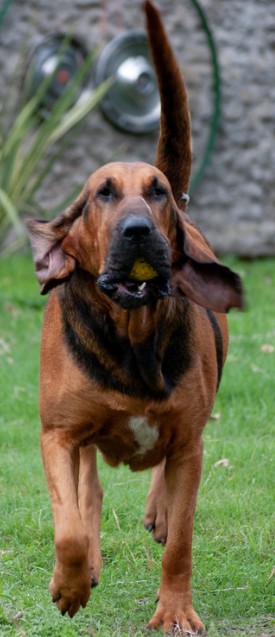
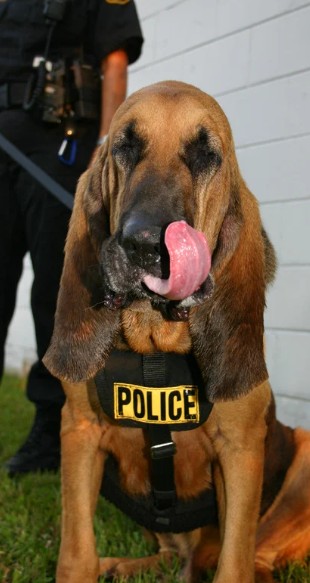
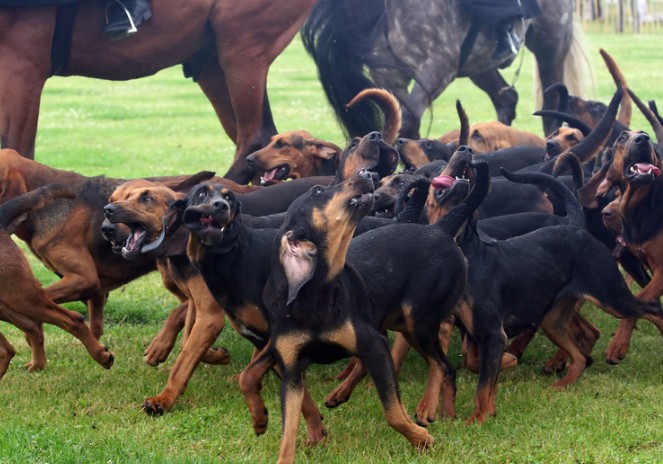
Training fades when trust leads.
A Bloodhound taught through force will pull away. A Bloodhound bonded through purpose will pull you in. The invisible leash begins not at the collar—but at the heart.
Lifestyle & Environment: Creating a Bloodhound Paradise
The Enriched Environment
Your home should honor their sensory needs:
- Scent gardens: Plant dog-safe herbs they can investigate
- Rotation zones: Change available toys/scents weekly
- Tracking paths: Create deliberate scent trails in your yard
Exercise as Connection
A tired Bloodhound isn’t necessarily a good Bloodhound—an engaged one is. Quality trumps quantity:
- Sniff walks: 20 minutes of investigative walking equals an hour of mindless exercise
- Tracking games: Mental stimulation through natural behavior
- Swimming: Low-impact exercise that many Bloodhounds enjoy
Senior Care: Honoring the Aging Tracker
Cognitive Changes in Senior Bloodhounds
As olfactory neurons age, you might notice:
- Increased confusion or “stubbornness”
- Changes in tracking accuracy
- Shifts in social behavior
Adaptive Training for Seniors:
- Simplify scent games but maintain engagement
- Use stronger scents (like anise or birch)
- Celebrate effort over accuracy
- Maintain routines religiously—they become cognitive anchors
The Deepening Bond
Senior Bloodhounds often show increased attachment to their handlers. This isn’t decline—it’s the culmination of years of NeuroBond building. They’ve learned that you’re their most reliable guide when their primary sense begins to fade.
Common Challenges and Solutions: Real-World Applications
Challenge 1: The Wandering Bloodhound
Traditional approach: Increase physical restrictions NeuroBond solution: Make staying close more rewarding than wandering
- Practice “check-ins” during every walk
- Reward voluntary proximity
- Create “home base” games where returning to you starts new adventures
Challenge 2: Selective Hearing
Traditional approach: Louder commands, more repetition NeuroBond solution: Understand they’re not ignoring—they’re prioritizing
- Use scent markers (treats in your pocket) to maintain relevance
- Practice recall with decreasing scent distractions
- Accept that 100% recall around strong scents may be unrealistic
Challenge 3: Leash Pulling
Traditional approach: Physical corrections, prong collars NeuroBond solution: Collaborative walking
- The standing leash technique described earlier
- Direction changes that make you unpredictable and interesting
- Scent rewards for loose-leash moments
Building Trust Through Boundaries: The Family System
Clear Roles, Mutual Respect
In the NeuroBond framework, boundaries aren’t limitations—they’re security. Your Bloodhound needs to understand:
- You’re the navigation system; they’re the tracker
- You decide direction; they investigate along the way
- You provide safety; they provide their gifts
This isn’t dominance—it’s a functional partnership where both roles are valued.
The Context of Connection
Every interaction builds or weakens your bond. Consider:
- How does your energy affect their behavior?
- Are you competing with their instincts or channeling them?
- Do they see you as an enhancement to their world or an obstacle?
Real-World Training Scenarios: Putting It All Together
Scenario 1: The Morning Walk
Instead of a battle of wills, create a ritual:
- Pre-walk scent check: Let them investigate the yard first
- Collaborative departure: They wait while you “check the trail”
- Structured freedom: Designated sniff zones alternating with movement
- Return celebration: The walk ends with a favorite game
Scenario 2: Visitors Arriving
Transform chaos into controlled excitement:
- Scent introduction: Let them smell an item from the visitor first
- Tracking game: Hide treats leading away from the door
- Managed greeting: Once calm, allow investigation
- Reward calmness: Attention comes from settled behavior
Conclusion: Is the Bloodhound-NeuroBond Approach Right for You?
Living with a Bloodhound using the NeuroBond approach isn’t about creating an obedient robot—it’s about developing a profound interspecies partnership. Ask yourself:
- Can you celebrate their independence while providing structure?
- Will you find joy in their scent-driven adventures?
- Do you have patience for connection-based rather than command-based training?
- Can you see training as a lifelong relationship rather than a task list?
If you answered yes, you’re ready for one of the most rewarding journeys in the canine world. Your Bloodhound won’t just be trained—they’ll be understood, honored, and deeply connected to you.
Remember: In the NeuroBond approach, every challenge is feedback, every instinct is valid, and every moment builds toward an invisible leash stronger than any physical restraint. Your Bloodhound’s extraordinary nose brought them into your life—let connection keep them by your side. 🧡
The journey begins not with a command, but with understanding. Not with control, but with trust. Welcome to the profound world of Bloodhound companionship—where following their nose leads straight to your heart. 🐾

